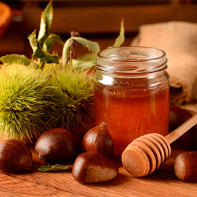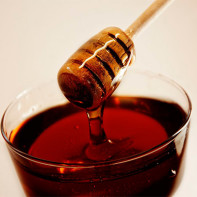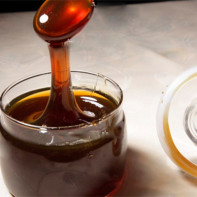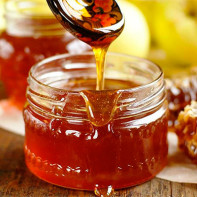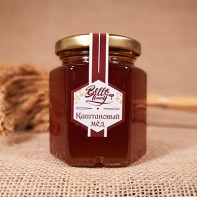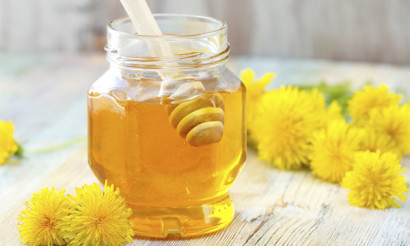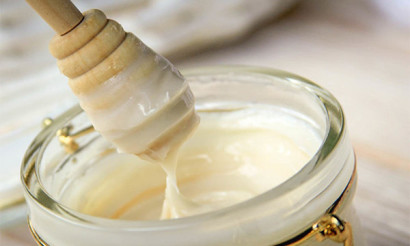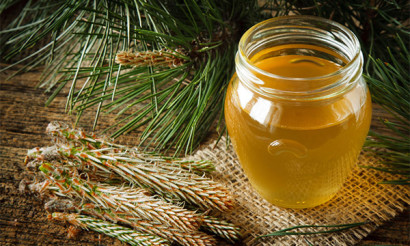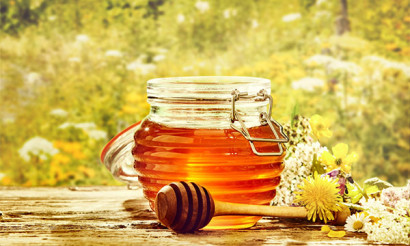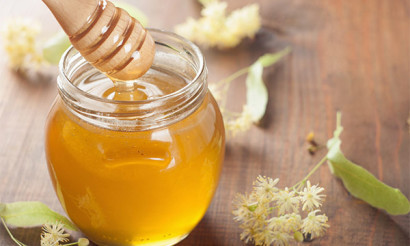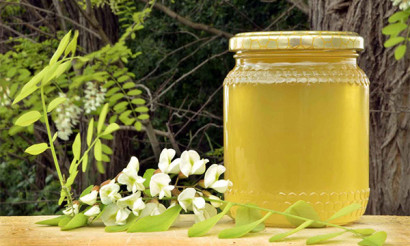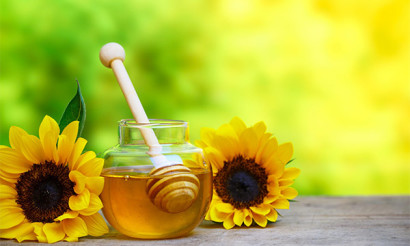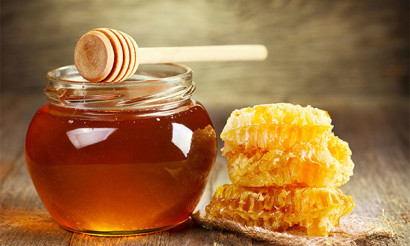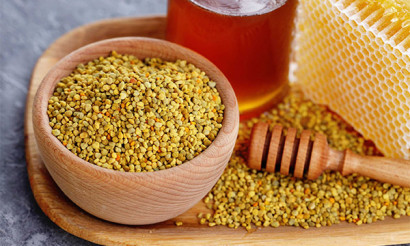Chestnut honey: health benefits and harms
The natural doctor created by nature itself is honey nectar. It contains many different vitamins, minerals, nutrients that can cope with most diseases. There are many varieties of honey treats. Its variety depends on which plant worker bees collected pollen from. Therefore, having tried and looked at the color of honey, you can guess which grade it belongs to.
- Feature and Features
- Colour
- Scent
- Sugaring
- Composition and calorie content
- Useful properties of chestnut honey
- General benefit
- For women
- For men
- During pregnancy
- When breastfeeding
- For kids
- When losing weight
- How to take chestnut honey for medicinal purposes
- Application in cosmetology
- Harm and contraindications
- How to choose and store
- How to identify a fake
- Interesting facts about chestnut
Chestnut honey appears as a result of collecting pollen from chestnut trees. Bees collect nectar from only two types of trees: noble and horse. Therefore, it is from the type of tree that the color and taste qualities of honey, as well as its healing properties, will depend. The chestnut does not bloom for long, therefore a little honey is obtained. Because of this, its cost is quite high. In addition, chestnut honey belongs to the dark varieties, and they are considered the most rich in useful trace elements.
Feature and Features
Chestnut tree is a perennial plant that grows almost all over the world, especially in moderate climatic conditions. After flowering, tasty, rich in nutrients and vitamins fruits that can be eaten appear on the tree. From nectar and pollen grains formed during the flowering period, bees produce honey. Chestnut begins to bloom in the spring, around the end of May and the first weeks of June. The flowering period lasts only 14 days.
Chestnut honey is considered quite a specific sweetness, so not everyone will taste best. Sown chestnut honey is of the greatest value and prevalence, because it has a great aroma and rich taste.
Colour
Horse chestnut honey is almost colorless, has a liquid, almost watery consistency. From the inflorescences of edible chestnuts, honey is obtained in a dark color.
Scent
The product has a specific smell, a rather sharp aroma of chestnuts. Dark honey varieties are characterized by a richer smell, vivid taste. Chestnut honey has significant differences from buckwheat and linden. It is practically not sweet, bitter, tart in taste with notes of spices.
Sugaring
The product begins to be sugared at different times, it all depends on what kind of chestnut tree the bees collected pollen from. The most rapidly crystallized is honey made from horse chestnut insects. The sowing, on the contrary, remains in a liquid consistency for quite a long time.
Composition and calorie content
Chestnut sweetness in its composition has substances useful to the human body. The product in large quantities contains vitamins, tocopherol and carotene. It contains a significant part of iron, potassium, calcium, copper, fluorine, zinc and a number of other macronutrients are also present. Honey has a fairly high humidity - about 18-21 percent. Exceeding from this norm indicates a fake beekeeping product, its poor quality.
Chestnut honey contains a large number of naturally occurring sugars, enzymes, essential amino acids and proteins, flavonoids, plant pollen, tannins, nitrogenous and ash substances, phytoncides.
100 g of beekeeping product contain 280–290 kcal. Such honey is allowed for regular use.
Useful properties of chestnut honey
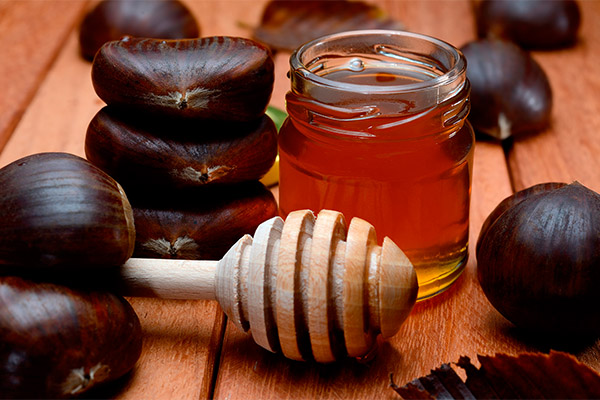
General benefit
This beekeeping product has a healing effect on the body, therefore it is used in the following conditions:
- gastrointestinal problems, ulcers, gastritis, jade;
- respiratory viral infections;
- pathology of the respiratory tract, bronchitis and tonsillitis;
- diseases of the urinary system;
- damage to the skin;
- inflammatory foci.
Also product:
- Helps to increase the efficiency of the gallbladder, stimulation of appetite.
- Effectively copes with bacteria, has an expectorant, antipyretic effect.
- It normalizes liver function, increases working capacity, endurance, and fights symptoms of weakness and fatigue.
- It enriches the body with vitamins and minerals necessary for normal life.
- Helps increase the body's defenses.
- It has a calming effect, resists stress and depression, has a beneficial effect on the functioning of the nervous system.
- Heals the blood supply system, increases the elasticity and strength of blood vessels. It is an excellent means of prevention from the development of thrombosis, varicose veins.
- Normalizes the thyroid gland.
- It is able to lower blood pressure, improve the well-being of people suffering from hypertension.
For women
This product is very useful for women, as it increases sexual desire for a partner, stabilizes the menstrual cycle, localizes and serves as an anesthetic during menstruation. It has a healing effect when used in the treatment of cystitis and thrush.
For men
The product has the following therapeutic effect on men: it alleviates the symptoms of prostatitis, solves various problems with the urethra, helps to improve quality and increases potency and duration, serves as a natural aphrodisiac, and speeds up the speed of sperm movement. This, in turn, contributes to early fertilization, changes the qualitative composition of seminal fluid in a positive direction.
During pregnancy
Representatives of the fair sex, in position, can include honey in their diet, not only as a sweet treat, saturated with useful vitamins, but also as an effective means of prevention from many diseases. In addition, a beekeeping product is also used as a medicine against the manifestations of toxicosis.
Chestnut honey enhances the body's defenses. It fights with various microbes and pathogenic bacteria and makes the digestive tract work better. By using honey, you can avoid constipation.
The most useful for pregnant women are dark varieties, because it is in them that in large quantities contains iron, copper, magnesium. But you can only include honey from chestnuts in your diet if there are no contraindications. If there is an increased sensitivity to the components of honey, then it is better to refuse from its use. It manifests itself as a headache, fever, rashes on the skin, runny nose, gastrointestinal disorders. If a woman has diabetes, the advisability of using honey should be determined by a specialist.
When breastfeeding
Chestnut honey is undoubtedly useful for breastfeeding due to its rich nutritional composition. However, it is worth using it with great care, not exceeding 2 teaspoons per day, since the composition contains substances that can cause allergies not only in the mother, but also in the baby.
For kids
Honey has a beneficial effect on growth and teething. Together with honey, the body receives a sufficient amount of calcium and magnesium, which is necessary for bone growth and normal development of the child's body. Drinking 5 g of honey daily, the child will fall asleep faster and sleep better. Honey in babies can cure jaundice, infection, and vomiting. It is also an effective remedy for disorders of the gastrointestinal tract. It is taken with milk.
For babies who are fed with a mixture, honey will be especially useful, since the bacteria that promote fermentation with this type of feeding do not work. And the carbohydrates that are part of honey are quickly and completely absorbed into the intestinal wall, which is very important, since undissolved food in the stomach causes the development of pathogenic bacteria, leading to an upset.
Honey has a healing effect, helps the body in the fight against various diseases, and with prolonged use of drugs helps to reduce their harmful chemical effects. Children's enuresis can also be cured with this product. White sugar can be replaced with honey, since it least loads the pancreas. Giving your child a small amount of honey every day can protect him from many viruses and strengthen his immunity.
When losing weight
Chestnut honey helps to reduce appetite and triggers metabolic processes in the body. This product is very nutritious and high-calorie, therefore it is not recommended to exceed the daily intake - not more than 30 g. During the diet, this will help satisfy the urge to eat something sweet. Honey itself does not affect the weight loss itself.
How to take chestnut honey for medicinal purposes
In order for chestnut honey to bring the greatest benefit to the body, it is recommended not to heat it before use. Heating above 60 degrees ensures that all its beneficial and healing properties are lost. That is why honey from chestnuts is not recommended to be added during cooking at the stage of applying high temperature and in hot tea.
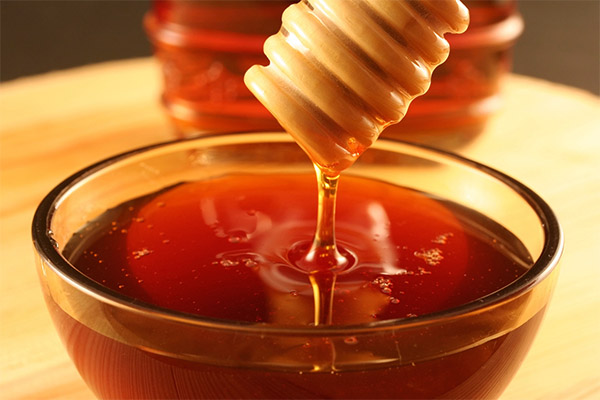
- As a preventive measure, honey should be used daily 5 g 3 times a day. In addition to honey, you can use other bee products, such as propolis, pollen. You can add chestnut honey to various herbal decoctions and tinctures.
- Chestnut honey is an effective adjuvant in the treatment of colds and respiratory viral infections. It is used with tea or broth. To make it, you need to brew a cup of tea, let it cool down to 45 degrees and then add 5 g of chestnut honey, you can also add a slice of lemon for taste. Such a drink should be taken three times a day.
- Gastrointestinal ulcers can be treated with the following home-made remedies. To do this, cut a few fresh leaves from aloe and put them in the refrigerator for a week. After the set time, pass the leaves through a meat grinder or grind in a blender. Add the same amount of chestnut honey to the resulting mass. The drug should be taken on an empty stomach from morning to 15 g. This course lasts a month, but you can continue to take up to 60 days.
- To eliminate the symptoms of diabetes, you can also use a homemade medicine with honey. It has several applications. The product can be combined with vegetables and fruits, with baking from wholemeal flour, which has a low calorie content, dissolved in tea or boiled water with a temperature of not more than 45 degrees. It is better to take the healing mixture in the morning on an empty stomach. The maximum daily intake of chestnut honey for this disease is 30 g. Unfortunately, this tool can not completely cure diabetes, but with regular use it significantly alleviates the patient's condition.
- In order to get rid of cough that occurs after colds and respiratory viral infections, bronchitis, it is necessary to perform the following therapeutic procedure. It is necessary to clean the black radish, grate it and squeeze 30 ml of juice from the resulting porridge. Add 15 g of chestnut honey to the liquid. Take the remedy immediately. The procedure is repeated every 2 hours. Every time you need to cook a fresh mixture.
- The following mixture is an effective remedy for sore throats. It has anti-inflammatory, antiviral and analgesic effects. To prepare it, you need to mix 15 g of chestnut honey with a glass of water.Completely dissolve honey in water, then gargle. After the procedure, refrain from eating food and drinking for 30 minutes. Perform this procedure is recommended at least three times a day. The temperature of the water for the preparation of healing liquid should not exceed 40 degrees.
- For the treatment of kidney stones, a decoction of medicinal herbs with the addition of chestnut honey is used. For cooking, you need to take currant leaves and hop cones, each ingredient 10 g each. Also add prickly tatarnik in the amount of 2 tablespoons, corn stigmas and chamomile - 1 tablespoon, bedstraw - 1 teaspoon. Pour the resulting collection with boiled water. Leave to infuse at room temperature for 30 minutes. Strain the liquid and add 5 g of honey from chestnuts to it. Drinking a decoction is recommended before bedtime.
- Honey is a natural antiseptic, has a general strengthening effect on the body, has an anti-inflammatory effect, therefore it is almost always prescribed for diseases of the upper respiratory tract. With angina, this remedy helps to neutralize streptococci and eliminate even an advanced purulent state of the disease. To relieve pain, it is recommended to gargle with water with the addition of honey. Gargling is sometimes not possible, then you can simply dissolve 1 teaspoon of honey in your mouth. To achieve the desired result, a sweet product must be taken at least three times a day for 5 g or 1 teaspoon. No need to swallow it immediately. It is better to hold the chestnut sweet liquid in the mouth until it is completely dissolved, after which it is as if swallowed, but not washed down with water. Thanks to this action, an antiseptic honey film forms on the back of the throat.
- They used to treat wounds with honey back in ancient Egypt. The product has an antiseptic effect, is able to disinfect the damaged area. It dries the damaged area of the skin and helps to accelerate its recovery. Honey compresses are still in demand in traditional medicine. Cooking them is quite simple. It is necessary to soak gauze or a cotton pad with honey and put on a sore spot. You can mix 3 tablespoons of chestnut honey with 1 tablespoon of fish oil. Apply the resulting mixture to the damaged epidermis and wrap it with a clean dressing.
- To prevent the occurrence of varicose veins, you must include in your daily diet 10 g of chestnut honey. You can get rid of the manifestations of the disease by making honey compresses. To do this, smear the problem area with honey or a mixture of 1 tbsp. tablespoons butter and 3 tbsp. spoons of chestnut honey. Wrap the treated area with a gauze bandage and polyethylene. It is better to do this procedure before bedtime.
- To maintain normal blood pressure, you should consume honey daily. This sweetness is also not contraindicated for hypertensive patients, however, you need to be careful, as honey helps to lower blood pressure. If you do not exceed the permissible daily norm, then it will tone the cells, improve blood circulation and eliminate weakness.
- To prevent hypertension, phyto-healers recommend daily eating 10 g of honey with 5 ml of garlic juice. A mixture of chestnut honey and blackcurrant can lower high blood pressure in a short period of time. In order to cook it, you need to take a pound of fresh black currant and add 75 g of honey. Take this remedy 15 g three times a day. The course lasts 1 month.
- The following remedy is used to treat kidney disease. To prepare it, you need to take 250 g of chestnut honey. Pour it into a glass container and place in a water bath. Add 15 g of powdered calamus root to it. Mix together the ingredients until smooth. Remove from the bath and allow to cool at room temperature. Take 5 g up to 4 times a day before meals. This medicine fights inflammation, soothes and anesthetizes. Alternate this remedy with tincture of radish.To prepare the tincture, grate the black radish on a fine grater, add 250 g of honey and the same amount of vodka to it. You need to take this remedy 40 ml three times a day.
- In the case of progression of urolithiasis, the formation of kidney stones and gall bladder, the following folk remedy is used. It is necessary to mix dried lavender flowers with thyme flowers in a ratio of 1: 2, strawberries and lemon balm in a ratio of 1: 2, add to them catnip and peppermint, mixed in a ratio of 2: 2. All plants mix together. Take 5 g of the collection and fill it with 250 ml of boiled water. Leave to insist for a quarter of an hour. This collection has a beneficial effect on the diseased organ. Useful trace elements of thyme and strawberry can crush large stones, turning them into sand.
- As a prophylactic against the appearance of stones and sand in the kidneys, you can apply the following composition. You need to grate the black radish on a fine grater, add honey to it in a ratio of 1: 1. To use the resulting mixture in food of 70-100 ml during the day, gradually increasing the dosage to 250 ml.
Traditional medicine recommends preparing a decoction of dry chestnuts in the treatment of colds and respiratory viral infections, with problems with the gastrointestinal tract, weak and frequent stools, and relieve edema as a diuretic. Previously, chestnuts must be filled with water in a ratio of 1:10. Put the resulting mixture on the stove, after boiling, warm for another 30 minutes. Take 30 g up to 5 times a day.
Application in cosmetology
If there is no allergy to chestnut honey, then it can be safely used for home cosmetic procedures: make masks for the face, body and hair. Weekly use of this product will not only transform the skin, but also give a healthy look and shine to the hair, saturating the body with useful vitamins and minerals. Including honey in decoctions of medicinal herbs, you can rid yourself of a number of problems and quickly refresh your appearance.
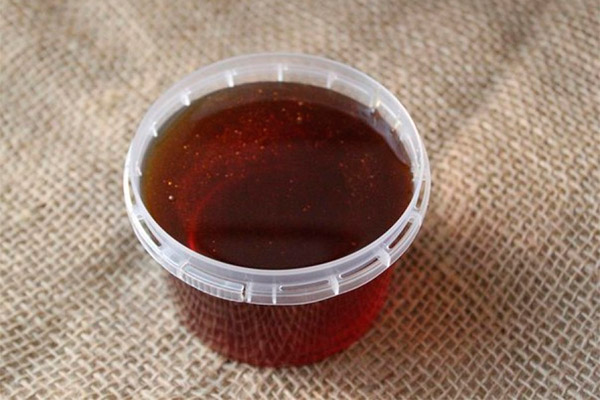
Compositions based on chestnut honey perfectly disinfect and cleanse the skin. Using them, you can get rid of acne and inflammatory processes on the surface of the skin.
- The mask has antiseptic and anti-inflammatory properties. She does a great job with acne. To prepare it, you need to erase 3 aspirin tablets in a powdered state. Add to them 5 g of chestnut honey. Mix everything well and bring the mixture to the consistency of thick sour cream, adding a little distilled water to it. Apply the product on problem areas of the skin and do not rinse off for a third of an hour. After that, remove the remaining unabsorbed mass with a cotton pad soaked in cold water. And it is better to apply a moisturizer to the skin. You can do this mask no more than two times during the week. The course lasts 45 days. Then you need to give the epidermis a rest for 30 days.
- In order to improve the root system of the hair, strengthen it, and also to get rid of their excessive loss, use the following mask. To prepare it, you will need one medium onion and two cloves of fresh garlic. Vegetables need to be peeled, washed and chopped to a mushy state with a blender or meat grinder. Add chestnut honey to the vegetable gruel in a ratio of 4 to 1. Pour 15 g of olive oil into the liquid if the hair is very dry. When using a hair mask with high fat content, adding oil is not recommended. Apply the resulting product along the entire length of the hair, especially carefully rubbing it into the basal part. Put polyethylene on your head and wrap it on top with a warm towel. The mask on the hair must be kept for half an hour, and then washed off.
- To accelerate hair growth, giving them volume, and also as a therapeutic agent that favorably affects the scalp, able to eliminate dandruff, use the following mask. To prepare it, you need to take 30 g of clay, 200 ml of kefir or yogurt, 15 g of honey and one raw egg. Heat kefir to 30–40 degrees, add clay, honey and an egg, previously beaten, to it. Apply the mixture to wet hair along its entire length.Put a cap of polyethylene on your head and wrap another terry warm towel over it. Hold the mask for about an hour, rinse with shampoo.
- To give hair smoothness, get rid of brittleness and split ends, nourish and restore the structure of hair, this mask is suitable. To prepare it, you need to beat 2 chicken eggs, melt the honey and pour it into the egg mixture. Squeeze 5 drops of aloe juice, but it is worth remembering that before using this plant, its leaves must lie in the refrigerator for at least 10 days. Add to eggs. All ingredients mix well with each other. If the mask is thick, then you can dilute it with milk. Spread the mask over its entire length, paying particular attention to the ends and roots of the hair. Put on a plastic hat and wrap a towel around your head. Keep the product on your hair for an hour. Wash off with warm water and shampoo.
- To cleanse, disinfect and eliminate oily shine on the hair, as well as a nutrient, use the following mask. To prepare it, you need 5 g of chestnut honey, the same amount of lemon juice and aloe juice, 1 clove of garlic, minced in the garlic, 5 g of lecithin. Lemon juice, garlic pulp, aloe juice and lecithin should be added to honey. Aloe can be used only after it has been lying in the refrigerator for 10 days. Mix all the ingredients together and apply the resulting composition to clean, damp hair along the entire length. Put on a shower cap, wrap your head in a towel. Keep the mixture for 40 minutes. Rinse off with warm water.
- To eliminate dry hair, their nutrition and recovery, the following mask is used. You can cook it from 5 g of honey, 10 g of burdock oil, two egg yolks, 15 g of mayonnaise and 2 cloves of chopped garlic. Mix all the ingredients with each other, rub the resulting mixture into the scalp, distribute the remains along the entire length. Put on a shower cap, wrap your head in a warm towel for 40 minutes, then rinse with warm water.
Harm and contraindications
You can not use this product in the presence of individual intolerance. Suffering from a disease such as diabetes, honey can be included in the diet only after consulting a specialist. In this case, it is important to observe strict dosage of the product. Side effects can occur only as a result of an overdose.
It is not worth it to prescribe yourself chestnut honey for the treatment of a specific disease. Be sure to consult your doctor. Women in position as well as breast-feeding should also carefully include the product in food.
If after taking chestnut honey, a rash with itching appeared on the body, there were problems with the stomach or nausea, swollen mucous membranes, headaches and runny nose started, then these are signs of an allergy. In this case, you should immediately stop eating honey and other dishes and drinks in which it is present. Otherwise, you can cause irreparable harm to health.
There are no other contraindications, but it is worth noting that the product should not be consumed in large quantities.
How to choose and store
To choose a quality product, you need to pay attention to external factors, texture, taste and try to feel the aroma.
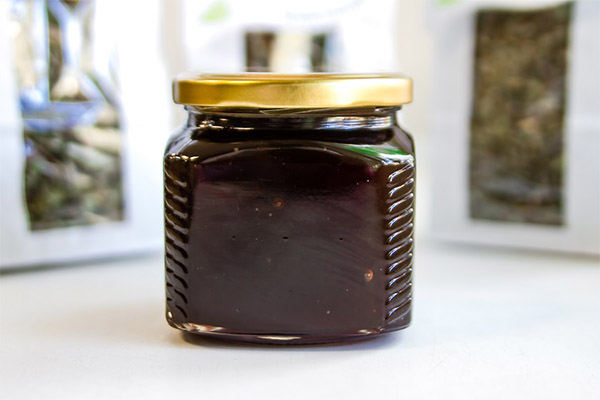
- Natural honey emits a pleasant aroma of pollen and chestnuts, the smell is not very saturated, it is light and airy.
- After tasting the product, you can feel a slight bitterness. But the taste of burnt sugar during the tasting should not be felt. This is one way of making fake - to give ordinary honey the appearance of chestnut helps roasted sugar, which helps darken the product.
- Chestnut honey should be dark in color. It has such a shade due to the large number of chestnut pollen and enzymes in its composition.When choosing, it is important not to confuse it with buckwheat honey.
- Chestnut honey is several times more expensive than other varieties of honey.
- When buying in August, honey should have a liquid consistency. After a couple of months, it will thicken a little, but it depends on the type of chestnut from which the bees collected nectar: horse or sowing. Because the product collected from horse chestnut begins to thicken and crystallize in a couple of months. Honey made by bees from another variety of chestnut remains in a liquid state for a long time. In the summer, fresh thick chestnut honey does not happen, if it is on sale, it means it is a fake or a product of last year’s collection, which is better not to eat.
- When winding chestnut honey on a spoon, it does not drain off it very quickly, but rather envelops it slightly.
- In real honey from chestnuts, you can see small remnants of flower pollen.
- Buying honey is better from trusted suppliers. At fairs and honey shows you can also buy a natural product.
- In order to accurately determine the naturalness, you need to do the following experiment: take a piece of thick paper and drip honey on it. If after 8 minutes a stain appears on the other side, then this is a fake product.
Chestnut honey can be stored in a dark room for no more than two years. In order for the product not to lose useful vitamins and minerals, it is better not to heat it more than 60 degrees. The container in which the liquid is stored should be kept tightly closed, otherwise honey will absorb a lot of extraneous odors. The container must be made of glass.
How to identify a fake
When choosing honey, be sure to try it before buying. To determine the authenticity of a product, a small amount of it must be heated; when exposed to heat, honey will lose its bitter aftertaste. To do this, it is enough to heat the product to 50 degrees in a steam bath. If after that the taste has not changed, bitterness is present, then this is fake honey.
Often starch is added to the fake, its presence can be determined using ordinary iodine. Also, honey is diluted with burnt sugar. Its presence can be determined by conducting the following experiment: drip a few drops of the investigated honey on a paper sheet and set it on fire. If nothing happened with the drops, then this is a real product. If sugar drops began to burn with the leaf, then this is a fake.
To determine the presence of sugar syrup, smear honey on the arm with a thin layer. In composition, you need to draw a line with a soft chemical pencil. If this is a fake, then you can notice a trace of a pencil.
Interesting facts about chestnut
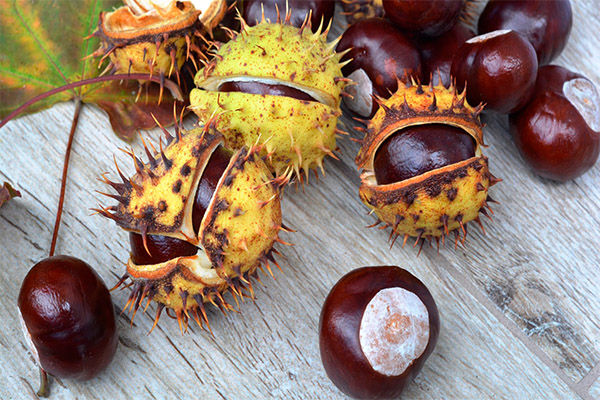
- In the south-west of Switzerland, in the city of Geneva, a special tradition has existed for a couple of years. The onset of spring is announced by special decree when the first leaf blooms on the "main" chestnut tree. It is worth noting that the "main" chestnut grows just under the windows of the cantonal government building. Most often, the first leaf blooms in March, but it has happened before. In 2002, for example, spring was announced at the end of December, the 29th. In 2006, the spring was announced twice, the first time the tree blossomed leaves in March, and then unexpectedly in October.
- On the coat of arms of the city of Kiev since 1969, a chestnut is depicted. The plant had a very neat appearance, its leaves and flowers were clearly shaped.
- The oldest and thickest chestnut in the world grows on the Sicilian peninsula. He was included in the Guinness Book of Records. The circumference of its trunk is 57.9 m, and the exact age could not be determined (about 200-400 years).
- Chestnuts only contain vitamin C.
- In buildings that are made of chestnut trees, no cobwebs can be found. Therefore, European castles are most often built precisely from such wood.
- Moisture is present inside the chestnut nut, as in popcorn.When heated, this humidity contributes to a strong bloating of the nut, capable of breaking the shell. You can hear soft cotton. That is why, before preparing these nuts, an incision is made on their shell.
- Chestnuts have a rich carbohydrate composition similar to potatoes.
- Chestnuts produce excellent flour due to the high content of starch in their composition.
- A chestnut tree on average lives 5 centuries, but with proper care and a favorable climate, even longer.
- The Romans used chestnut flour as the main ingredient in baking bread.
- According to the nutritional composition, chestnuts are very close to brown rice, so sometimes the product is called rice growing on trees.
- Most chestnuts in the world are eaten by the Chinese (a little less than half, about 40 percent). They are stewed, added to soups, baked in a hot sand. Traditional treats for Christmas and New Year's holidays are candied chestnuts.
- During Easter holidays, the local population of Corsica brings and consecrates chestnut nuts in the church instead of Easter cakes and painted chicken eggs.
«Important: all information on the site is provided exclusively in fact-finding purposes. Before applying any recommendations, consult with a profile specialist. Neither the editors nor the authors are liable for any possible harm caused materials. "

